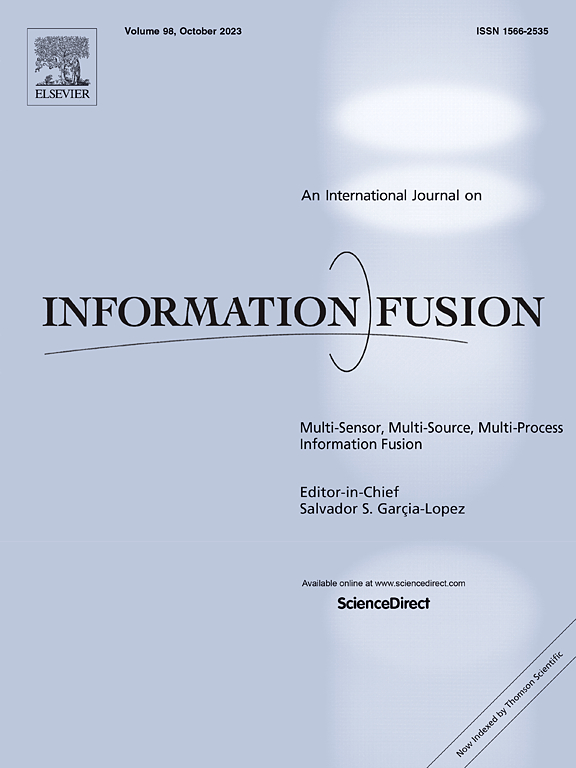MelNet: an end-to-end adaptive network with adjustable frequency for preprocessing-free broadband acoustic emission signals
IF 14.7
1区 计算机科学
Q1 COMPUTER SCIENCE, ARTIFICIAL INTELLIGENCE
引用次数: 0
Abstract
Deep learning can obtain discriminative abstract information from the artificial features of acoustic emission signals and complete the target task in the form of high-precision recognition. However, mainstream deep learning is only a mechanical implementation work, but cannot provide valuable feedback on signal analysis. To overcome this problem, this paper innovatively proposes an end-to-end interpretable model that highly integrates two-dimensional time-frequency representation with neural network feature extraction. The proposed model can be considered as an initial tool for signal analysis. Specifically, the core frequency used to control the resolution of time-frequency features will be fully involved in model training and gradient propagation. The adaptive learning algorithm not only accurately captures the key frequency characteristics of the signal, but also identifies and skips sub-optimal frequency points that do not bring significant performance improvements. More importantly, this visualization of the adaptive frequency selection process ensures that the extracted features are highly relevant to the task, thus improving the interpretability of the feature extraction stage. The feasibility of the proposed method was verified in two different cases: key equipment service monitoring and manufacturing process monitoring. The results show that the proposed method can optimize the optimal frequency component and obtain ideal monitoring accuracy without relying on any expert experience. While the deep learning model itself may not be inherently interpretable, its role in guiding the feature extraction process via gradient optimization introduces a level of interpretability absent in conventional methods.
MelNet:一个端到端的自适应网络,频率可调,用于无预处理的宽带声发射信号
深度学习可以从声发射信号的人工特征中获得判别性的抽象信息,并以高精度识别的形式完成目标任务。然而,主流的深度学习只是一个机械的实现工作,而不能提供有价值的信号分析反馈。为了克服这一问题,本文创新性地提出了一种端到端的可解释模型,该模型高度集成了二维时频表示和神经网络特征提取。该模型可作为信号分析的初始工具。具体而言,用于控制时频特征分辨率的核心频率将全面参与模型训练和梯度传播。自适应学习算法不仅能准确捕捉信号的关键频率特征,还能识别并跳过不能带来显著性能提升的次优频率点。更重要的是,这种自适应频率选择过程的可视化确保了提取的特征与任务高度相关,从而提高了特征提取阶段的可解释性。通过关键设备服役监控和制造过程监控两种不同的案例验证了该方法的可行性。结果表明,该方法可以在不依赖任何专家经验的情况下,优化出最优频率分量,获得理想的监测精度。虽然深度学习模型本身可能不是固有的可解释性,但它在通过梯度优化指导特征提取过程中的作用引入了传统方法所缺乏的可解释性。
本文章由计算机程序翻译,如有差异,请以英文原文为准。
求助全文
约1分钟内获得全文
求助全文
来源期刊

Information Fusion
工程技术-计算机:理论方法
CiteScore
33.20
自引率
4.30%
发文量
161
审稿时长
7.9 months
期刊介绍:
Information Fusion serves as a central platform for showcasing advancements in multi-sensor, multi-source, multi-process information fusion, fostering collaboration among diverse disciplines driving its progress. It is the leading outlet for sharing research and development in this field, focusing on architectures, algorithms, and applications. Papers dealing with fundamental theoretical analyses as well as those demonstrating their application to real-world problems will be welcome.
 求助内容:
求助内容: 应助结果提醒方式:
应助结果提醒方式:


